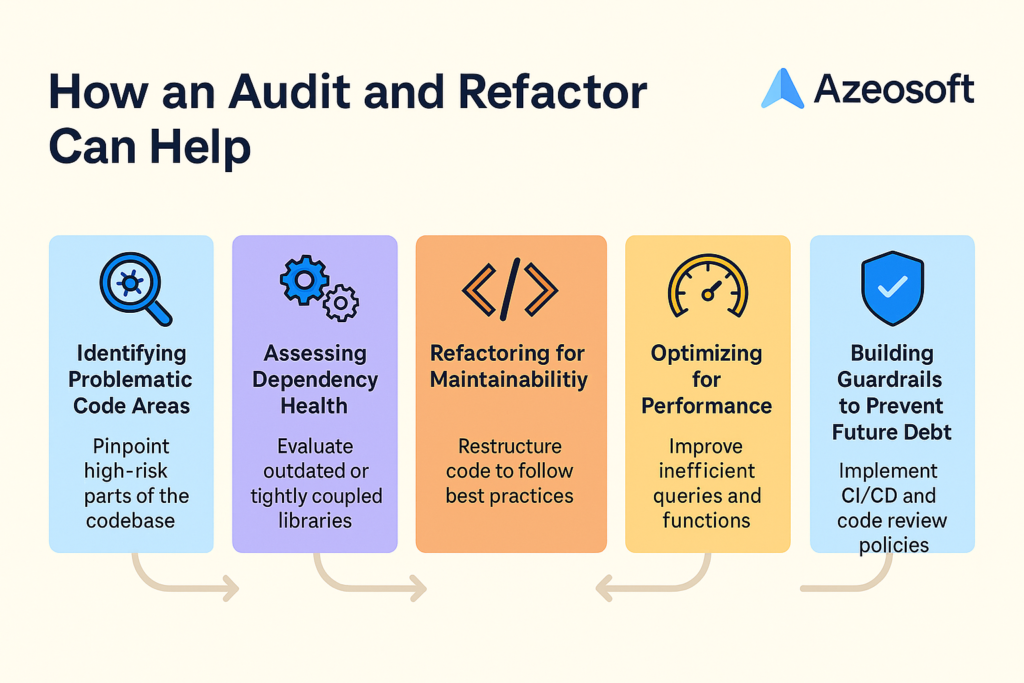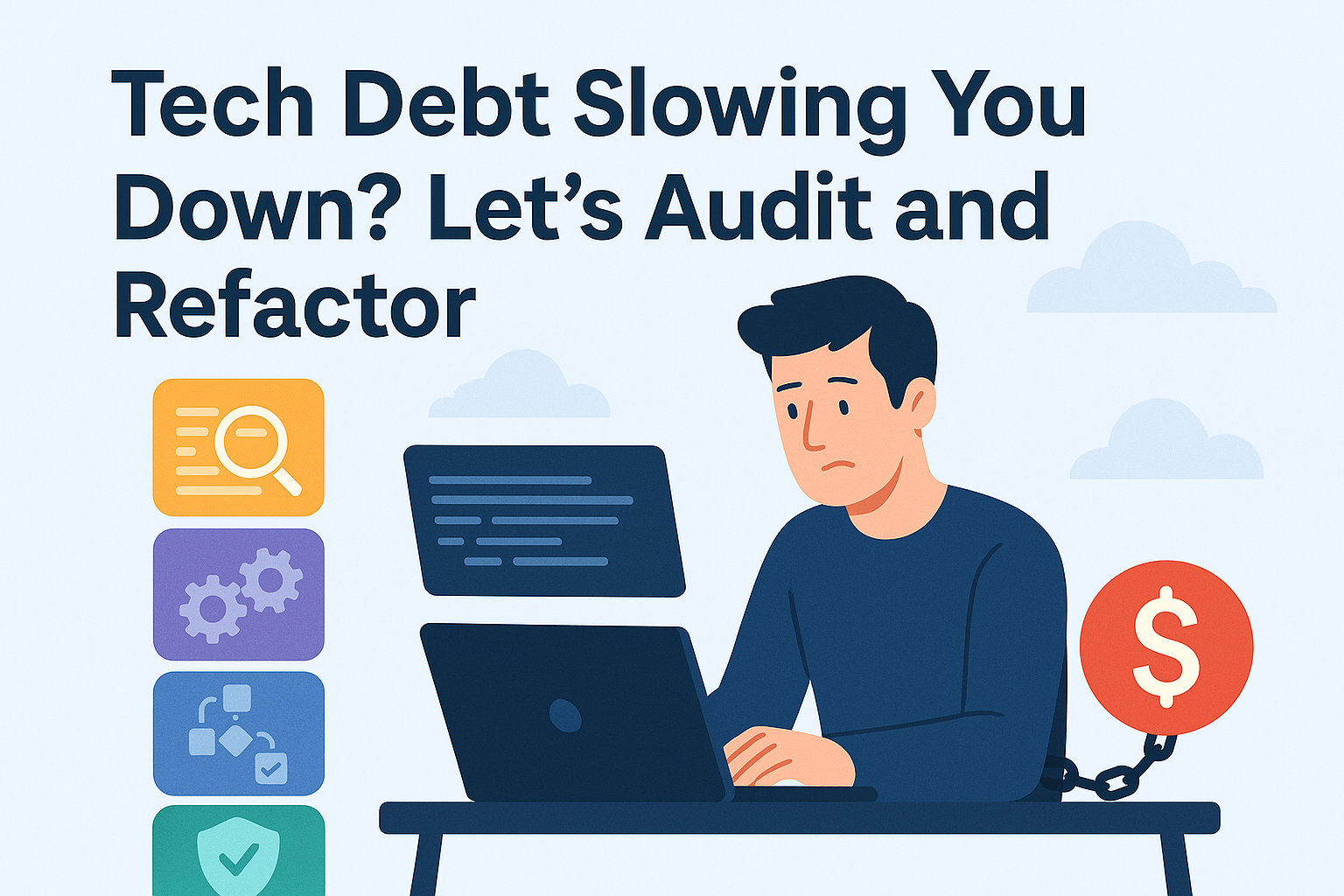Every product owner dreams of rapid development — new features released fast, user feedback implemented quickly, and teams working in sync. But over time, something starts to slow everything down. Deployments take longer, bugs multiply, and simple changes require days of work.
This hidden drag on your progress is technical debt — the shortcuts, outdated code, and quick fixes that pile up over time. Left unchecked, tech debt can turn even the most promising product into a maintenance nightmare.
Why Technical Debt Is a Silent Business Risk
From Azeosoft’s experience auditing dozens of products, we’ve seen that tech debt doesn’t just slow down developers — it directly impacts business outcomes:
- Longer Time-to-Market – Simple features take weeks because the codebase is fragile.
- Increased Bug Rates – Poorly structured code creates ripple effects when changes are made.
- Low Team Morale – Developers get frustrated working around messy systems.
- Scaling Problems – Architectures with heavy debt buckle under growth pressure.
Ignoring tech debt is like ignoring cracks in a building’s foundation — it may seem fine today, but it will cost much more to fix later.
How an Audit and Refactor Can Help
A technical debt audit evaluates your entire codebase and architecture to find and fix hidden slowdowns. Here’s how we do it at Azeosoft:

1. Identifying Problematic Code Areas
We run static code analysis, review architecture diagrams, and talk to your team to identify high-risk parts of the codebase. These are usually the spots where developers spend the most time debugging and maintaining.
2. Assessing Dependency Health
Old, unsupported libraries and tightly coupled dependencies are major debt contributors. We assess which dependencies need updates, replacements, or a complete decoupling to improve stability.
3. Refactoring for Maintainability
We don’t just clean the code — we restructure it. This includes breaking down large functions, introducing design patterns, and ensuring the code follows best practices, so future development becomes faster and safer.
4. Optimizing for Performance
Refactoring isn’t only about readability; it’s about speed. We look for inefficient queries, redundant loops, and heavy functions that slow down your app — and optimize them for peak performance.
5. Building Guardrails to Prevent Future Debt
Once cleaned, we help you set up CI/CD pipelines, automated testing, and code review policies so tech debt doesn’t creep back in.
For some things, experts are better — and at Azeosoft, we’ve helped startups and enterprises turn sluggish, debt-heavy systems into clean, scalable, and high-performing products.
Real Example: Turning Around a Debt-Laden Platform
A logistics SaaS platform came to us with long release cycles and frequent production bugs. Our audit revealed that their core API had over 4,000 lines of untested, tightly coupled code. We modularized the API, optimized database calls, and replaced legacy dependencies. Within 3 months, their release cycle dropped from 3 weeks to 5 days — with a 40% reduction in post-release bugs.
TL;DR
Technical debt may not show up on a dashboard, but it silently eats away at your product’s agility and your team’s productivity.
A Tech Debt Audit and Refactor is not an expense — it’s an investment in speed, stability, and scalability. The longer you wait, the harder and costlier it becomes to fix.
Azeosoft specializes in auditing and refactoring codebases so you can innovate faster, reduce downtime, and scale without being held back by yesterday’s shortcuts.
Ready to remove the brakes from your product’s growth?

